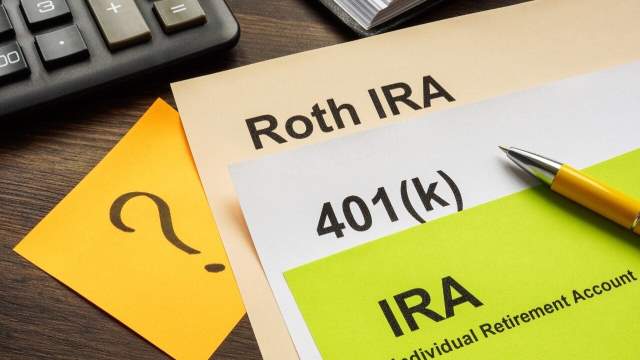The Ultimate Retirement Tool: Exploring the Benefits of 401(k) Plans
Key Takeaways:
- 401(k) plans offer significant advantages, including tax benefits and employer matching contributions.
- Contributing early and consistently can lead to substantial retirement savings due to the power of compounding.
- Diversifying investments within a 401(k) helps manage risk and protect your savings.
- Staying informed about legislative changes can maximize the benefits of 401(k) plans.
Introduction to 401(k) Plans
401(k) plans stand out as one of the most powerful tools when preparing for retirement. These employer-sponsored retirement accounts offer a range of benefits designed to help employees save for the future. By contributing to 401(k) plans, employees can take advantage of tax benefits and potential employer matching contributions, making building a robust retirement fund easier. Moreover, the structured framework of a 401(k) offers employees a straightforward path to consistent savings, providing much-needed discipline in financial planning.
Anyone trying to safeguard their financial future must comprehend the advantages of 401(k) plans, how they operate, and how to maximize these benefits. This article provides useful advice on maximizing the potential of this retirement savings tool while examining the ins and outs of 401(k) programs. By learning the ins and outs of 401(k) plans, individuals may take proactive steps to maximize their investments and ensure they are ready for a respectable retirement.
Understanding 401(k) Plans
One kind of retirement savings account that allows employees to contribute pre-tax money with a portion of their salary is a 401(k) plan. Following that, the contributions are invested in a range of instruments, including bonds, equities, and mutual funds. Until they are taken during retirement, the money in the account grows tax-deferred; at that moment, they become taxable as income. Over time, these tax-deferred development opportunities can save substantial money because the money that would have otherwise been paid in taxes is invested and continues to yield returns.
The possibility of employer-matching contributions is one of the major advantages of a 401(k) plan. Many companies will match a portion of their workers’ contributions, thus giving them free money to increase their retirement savings. This can quicken a retirement fund’s growth considerably. Let us use the scenario where an employer matches 50% of employee contributions to a fixed percentage of the worker’s salary. In that scenario, the employee can effectively enhance their savings by maximizing the match.
Another benefit is the freedom to choose how to invest. Employees can customize their investment portfolios to match their risk tolerance and retirement objectives using the variety of alternatives offered by most 401(k) plans. Thanks to the variety of options available, which range from aggressive stock options to cautious bond funds, employees can create a diverse and well-balanced portfolio that can adjust to shifting market conditions.
Maximizing Contributions
Encouraging maximum contributions is necessary to benefit from a 401(k) plan fully. The IRS sets annual contribution caps, which might change from year to year. For 2023, employees may fund their 401(k) plans with up to $22,500 in contributions. Catch-up payments are permitted for individuals 50 and above, increasing the maximum to $30,000.
This higher limit for older employees provides an opportunity to significantly boost retirement savings during their final years of employment.
Your retirement savings might increase dramatically if you contribute the full amount permitted. Furthermore, you can accelerate the growth of your retirement fund by making the most of employment-matching contributions. If you do not make the most of your contributions, you can be throwing away money and limiting the potential growth of your savings. By ensuring that you constantly contribute to your 401(k), setting up automatic payments makes it easier to reach these maximum contribution levels without requiring constant work.
Additionally, increasing your contributions incrementally over time can make it more manageable. For example, consider raising your contribution rate by 1% each year, especially after receiving a raise. This approach can help balance the need for present financial stability with the need to secure your future retirement.
The Power of Compounding
The potential of compounding is one of the strongest arguments for contributing to a 401(k) plan as soon as possible. Over time, compounding can lead to a substantial increase in the value of your funds as the returns on your investments generate additional returns. Starting early gives your investments more time to develop, which means that your savings will have increased dramatically by the time you retire.
Consider this scenario: if you start saving $200 a month at age 25 and earn 7% annually on average, you may have almost $500,000 by age 65. Your amount by age 65, assuming you begin the same savings plan at age 35, would be slightly over $250,000. Even modest contributions can add up throughout a career, emphasizing the value of getting started early and giving regularly. Compound interest allows even a dollar saved now to grow into a substantial amount later on.
Diversifying Investments
Diversifying investments within a 401(k) plan is another critical strategy for managing risk and protecting your savings. Diversification involves distributing your investments among a number of asset classes, such as stocks, bonds, and mutual funds, to lessen the impact of any single investment’s bad performance. Over time, this balanced strategy may result in more consistent returns, which also helps protect your portfolio from market volatility.
A well-diversified portfolio can balance growth and stability, helping protect your savings from market volatility. For example, stocks can offer higher growth potential but also have higher risk. Bonds and other fixed-income securities tend to be more stable but offer lower returns. Including alternative investments, such as real estate or precious metals, can further diversify your portfolio and enhance its resilience.
Working with a financial adviser can help you develop a diversified investment strategy tailored to your risk tolerance and retirement goals. Advisors have the expertise to analyze market conditions and recommend adjustments to your portfolio. Regularly reviewing and rebalancing your investments ensures that your portfolio aligns with your long-term objectives.
Seeking Professional Advice
Working with a financial counselor can obtain personalized advice and tactics catered to your financial circumstances. Financial advisors are qualified to assess your present savings, make recommendations for modifications, and notify you of significant changes to the law that may impact your retirement plans. Their guidance may help you avoid typical traps and make the most out of your retirement savings plan, eventually resulting in a more secure financial future.
They can help analyze your savings, recommend adjustments, and inform you about legislative changes that may affect your retirement planning. For instance, advisors can help you navigate changes in tax laws, contribution limits, and required minimum distributions (RMDs). You can make the most of the advantages offered and steer clear of any fines or lost opportunities by remaining informed.
Staying Informed About Legislative Changes
Legislation can significantly impact 401(k) plans, making it crucial to stay informed about changes that may affect your retirement savings. For example, the SECURE Act introduced several changes to retirement plan rules, including raising the age for required minimum distributions (RMDs) from 70.5 to 72 and allowing long-term part-time employees to participate in 401(k) plans.
Keeping up with legislative changes can help you take full advantage of new opportunities and avoid pitfalls. For instance, new laws may introduce increased contribution limits or additional tax benefits, providing further incentives to save for retirement. Staying informed enables you to adapt your saving strategy and ensure compliance with new regulations, maximizing the benefits of your 401(k) plan.
Additionally, participating in educational seminars or workshops on retirement planning can keep you updated on the latest legislative changes and financial strategies. Many employers and financial institutions offer these resources to help employees stay informed and make well-informed decisions about their retirement savings.
Conclusion
401(k) plans are a powerful tool for securing retirement. Employees can significantly enhance their retirement savings by understanding how these plans work, maximizing contributions, diversifying investments, and staying informed about legislative changes. These steps can provide a robust financial foundation and ensure a comfortable and fulfilling retirement. Investing time and effort into proper retirement planning today can lead to financial independence and peace of mind in the future.







